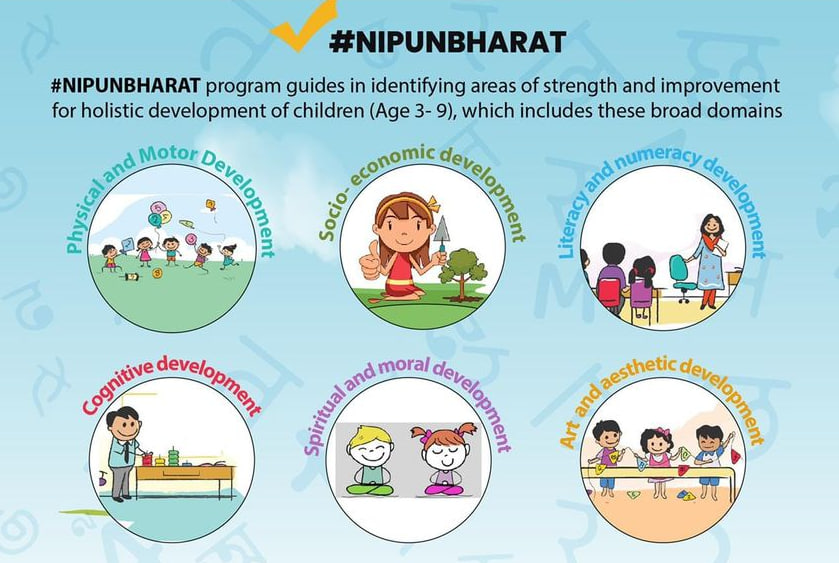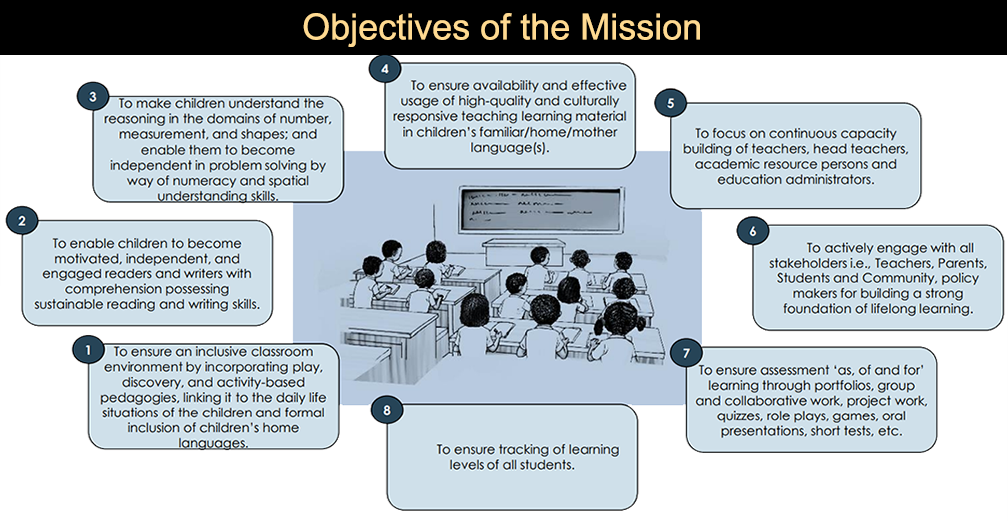Free Courses Sale ends Soon, Get It Now


Free Courses Sale ends Soon, Get It Now



Copyright infringement not intended
Context: In a written response submitted to the Rajya Sabha, the minister of women and child development provided information on the many measures the Indian government is taking to promote proper nutrition.
Details
Highlights of the Minister of women and child development statement in the Rajya Sabha
About Nipun Bharat Scheme
Objectives of NIPUN Bharat

Foundational literacy: The pre-existing knowledge of the language helps in building literacy skills in languages. The key components in Foundational Language and Literacy are:
Foundational Numeracy: Foundational Numeracy means the ability to reason and to apply simple numerical concepts in daily life problem-solving. The major aspects and components of early mathematics are;
Way Forward
|
PRACTICE QUESTION Q. Consider the following Statement about the NIPUN Bharat Mission; 1. It was launched by the Finance Minister during the Union Budget 2023-24. 2. It has been launched under the aegis of the central sector scheme of Samagra Shiksha. 3. It focuses on children of the age group of 3 to 9 years including preschool to Grade 3. Which of the following Statement is/are incorrect? (A) 1 and 2 only (B) 2 and 3 only (C) 1 and 3 only (D) 1, 2 and 3 Answer: A Explanation: Statement 1 is incorrect: The Ministry of Education launched the National Mission on Foundational Literacy and Numeracy called National Initiative for Proficiency in Reading with Understanding and Numeracy (NIPUN Bharat) in July 2021. Statement 2 is incorrect: NIPUN Bharat Mission has been launched under the aegis of the centrally sponsored scheme of Samagra Shiksha. Statement 3 is correct: The mission will focus on children of the age group of 3 to 9 years including preschool to Grade 3.
Q. The Success of the National Education Policy 2020 depends on the success of NIPUN Bharat. Discuss |
© 2024 iasgyan. All right reserved